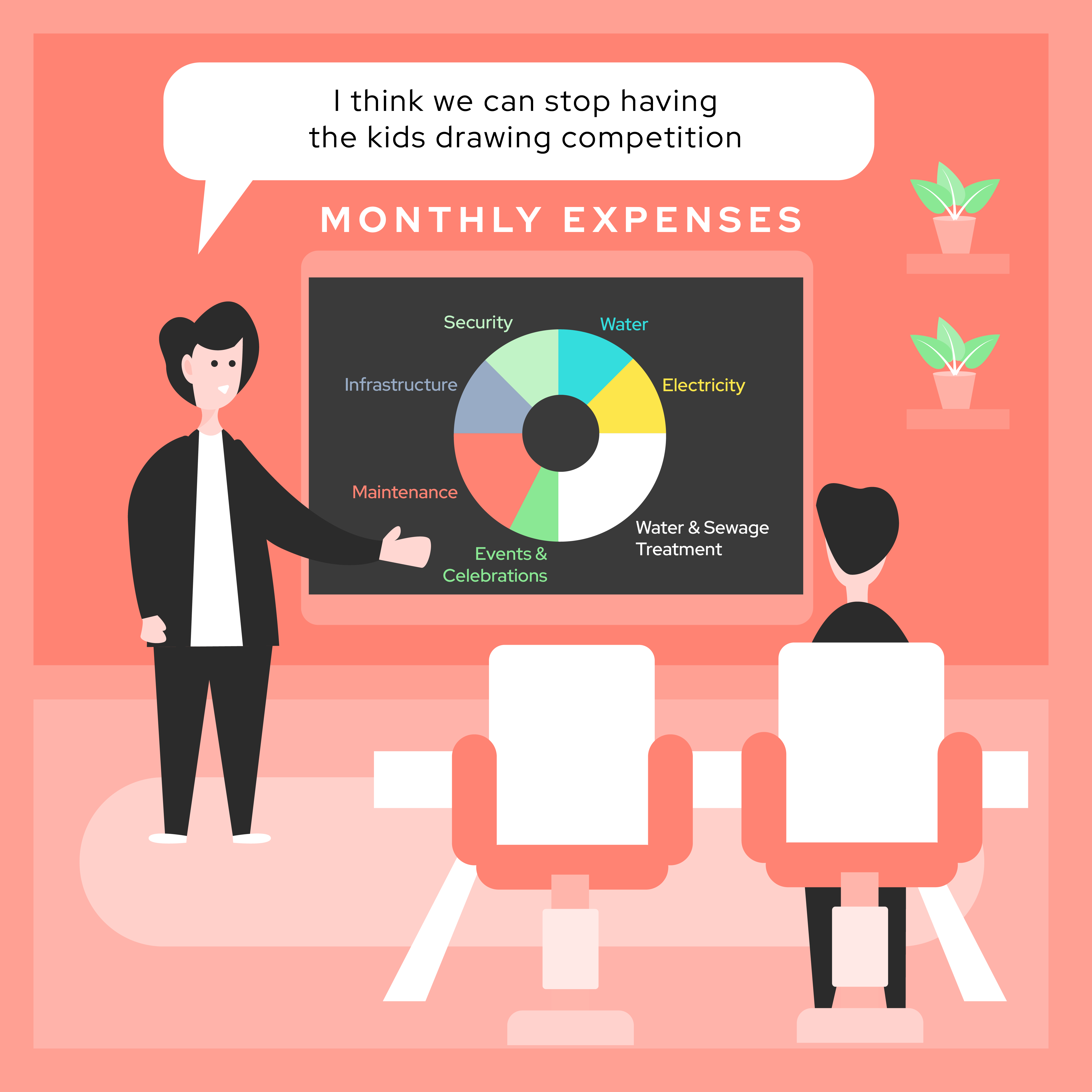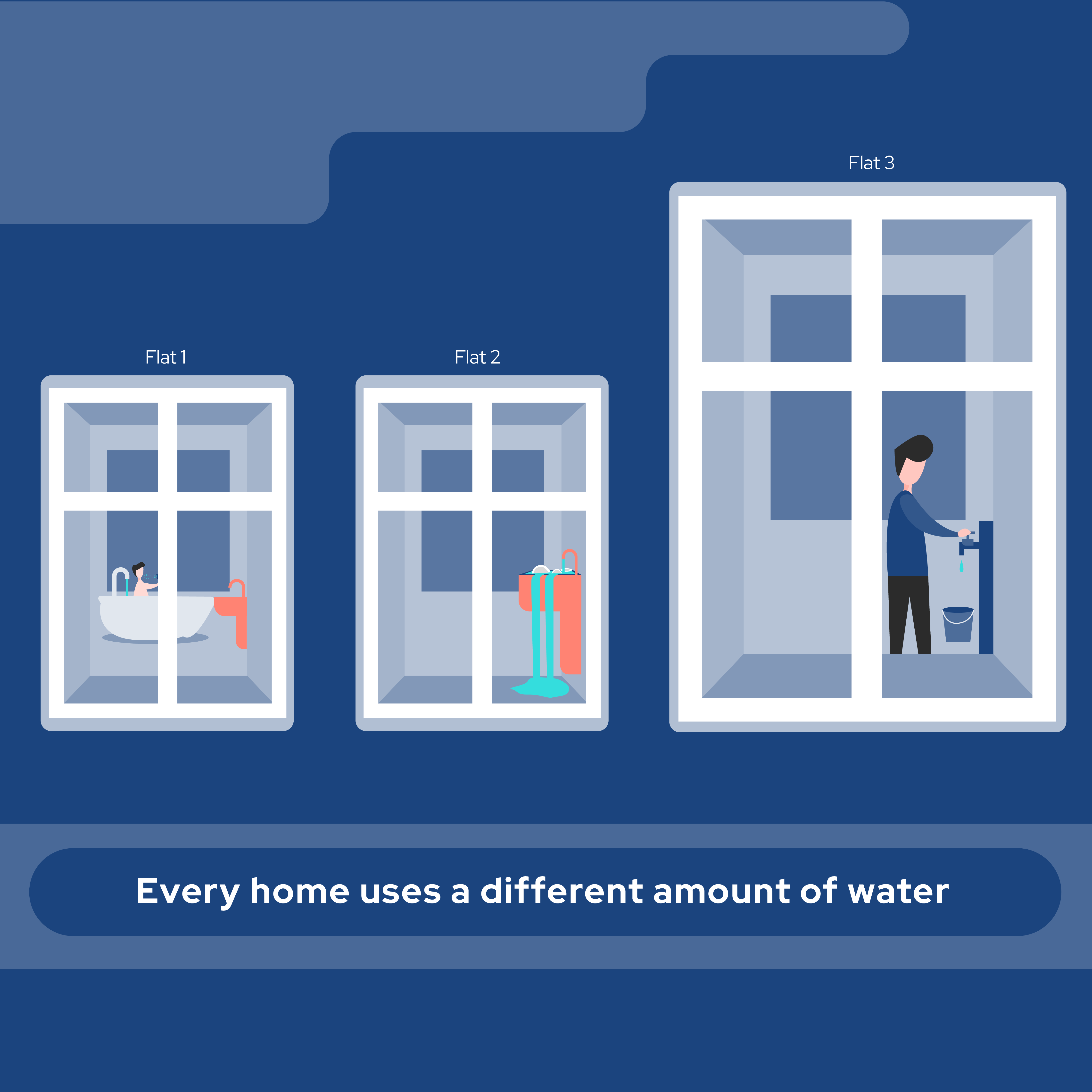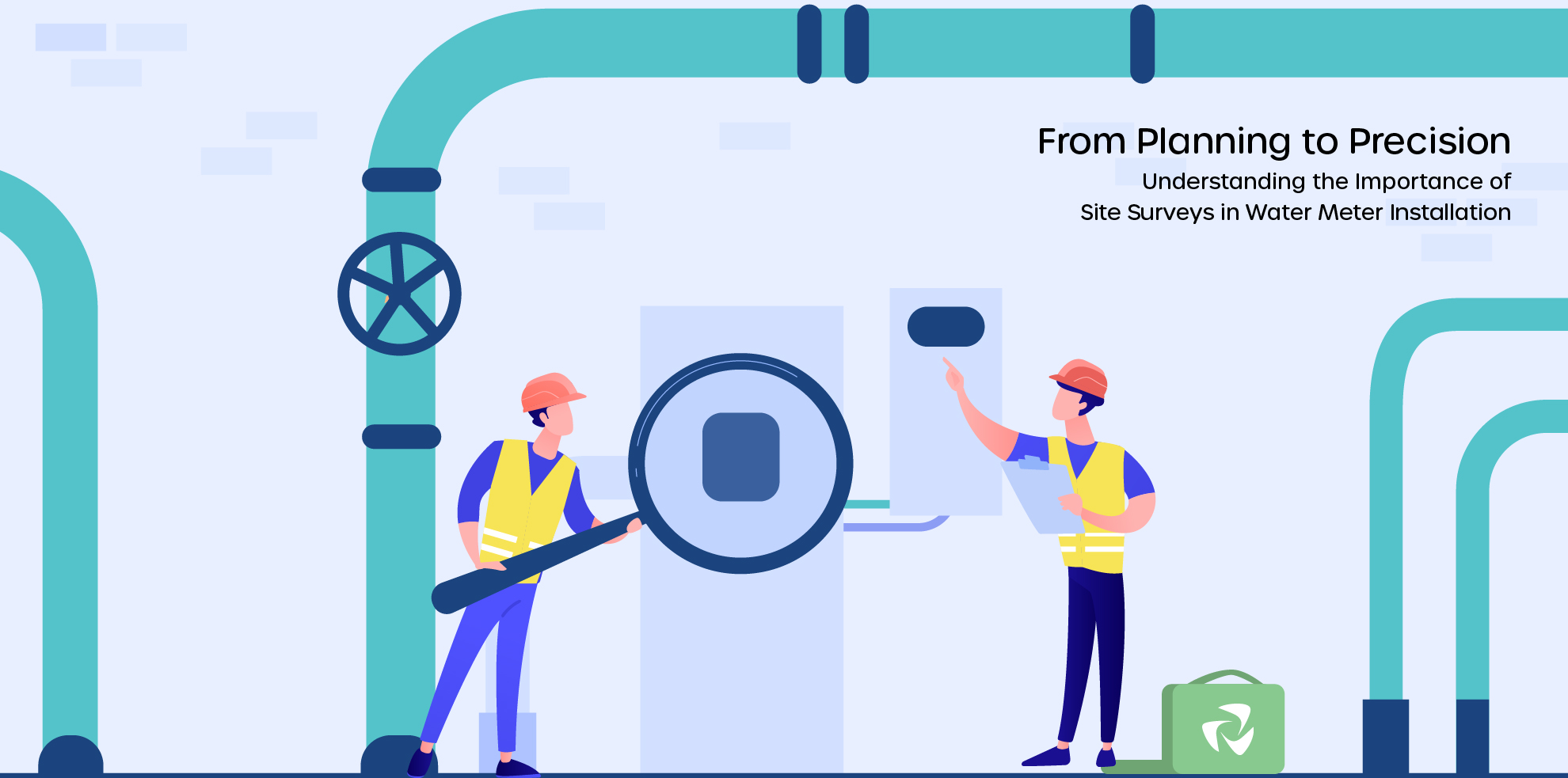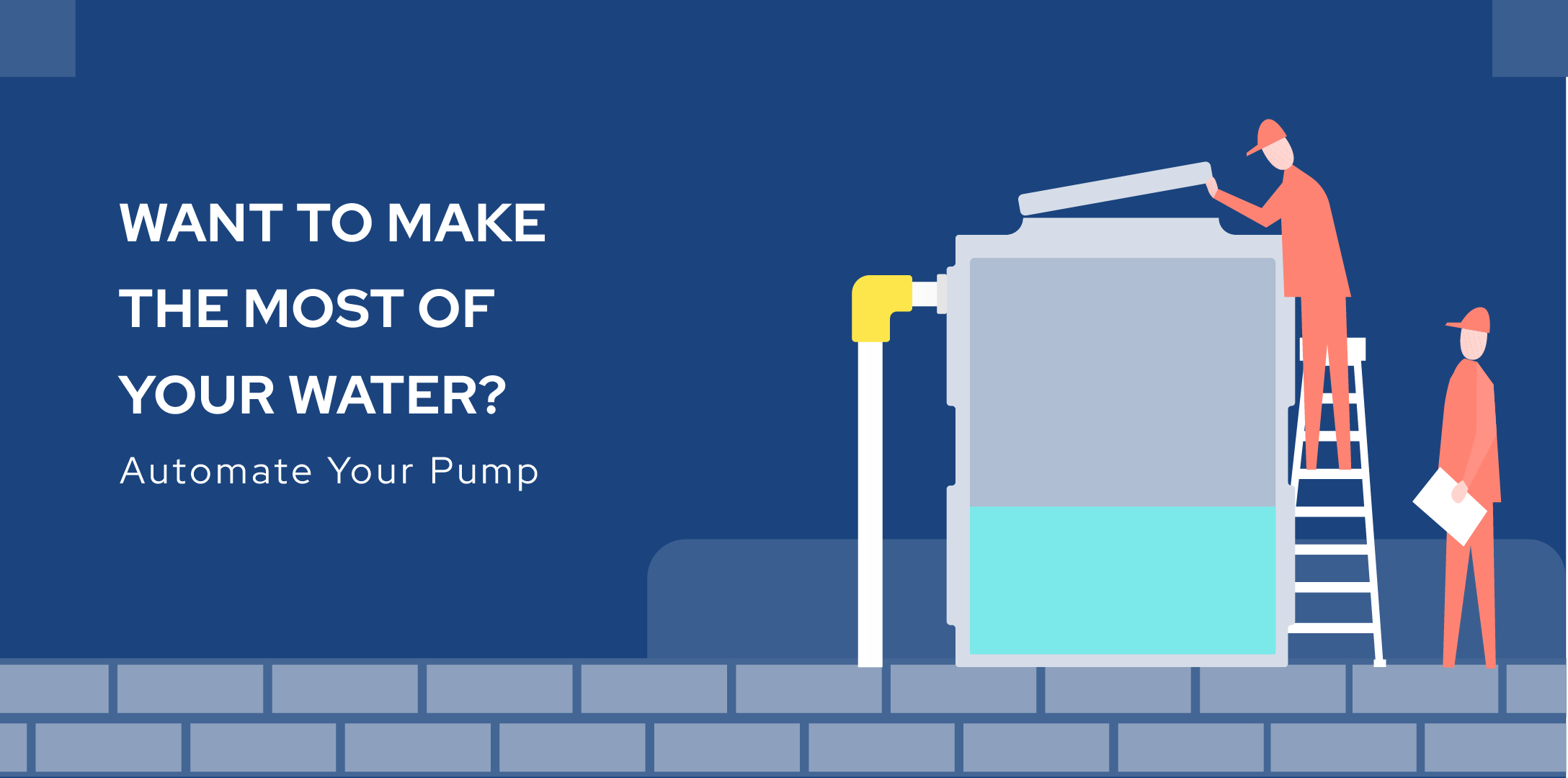One of the biggest preoccupations in residential communities is the monthly maintenance charge.
Monthly maintenance charges pay for a number of facilities
– Water procurement (of course, we are obsessed with that)
– Security and surveillance – paying salaries and operating CCTV cameras
– Maintaining infrastructures like lifts, the gym, play area, swimming pool, and green spaces
– Cleaning and maintenance of common areas
– Electricity charges for motors, pumps, lights, and fixtures in common areas
– Community events and celebrations
– Operating and maintaining water and sewage treatment plants – WTP and STP (rawr, we bookended that nicely, huh?)
Deciding on the maintenance charges, collecting them, or revising them upwards can be a source of conflict. However, it doesn’t have to be. There are ways to bring down maintenance costs, while also making the job of the facility manager and the management committee easier.
The Biggest Part of the Monthly Maintenance Cost

In large residential communities, water seeps into nearly every part of the monthly maintenance charges.
– Procurement – Nearly no one in urban India has sufficient access to municipal water. Communities have to supplement this with borewells, rainwater harvesting, reuse of STP water, and purchasing water from tankers. Getting sufficient water for residents is always a challenge.
– Maintenance – Cleaning common areas and maintaining the swimming pool requires water
– STP and WTP – Often water has to be treated before it becomes available for use or reuse. Operating and maintaining these infrastructures is expensive and is directly linked to water consumption
– Electricity charges – the pump, motor, or hydropneumatic system that sends water into every residence consumers power. Similarly, operating the WTP and STP are also energy intensive. Water is one of the biggest components of the electric bill paid by the community.
Many residents are unhappy when their monthly charges go up. But, they are unaware of how much is possible through a concerted effort to bring down water consumption.
For more information read our blog: Water Conservation is Key to Reducing Maintenance Costs in Apartments
The Cost of Water
Let’s take a closer look at water-related expenses. They fall into two major categories
Procurement
– Payment to the municipality
– Payment to tanker vendors
– Money spent on installing WTP, STP, and rainwater harvesting structures
Maintenance
– Cleaning and maintenance of water infrastructure (fixing broken pipes, arresting leakages)
– Operational costs of running the WTP, STP, borewell, pump and motor
– Electricity charges
Every extra litre of water places a complex financial burden on the community.
More money is spent on procurement, longer runtime for the WTP, more energy is spent on pumping water and treating sewage, and definitely higher water and electricity charges.
The management committee takes a look at the expenses and tries to divide the number among residents in an acceptable and fair manner. Usually, these expenses are met by charging residents a monthly maintenance cost – either on a flat-rate basis or on a fixed-rate basis.
Flat Rate: Everyone pays the same amount for maintenance, no matter how much water or resources they use.
Fixed Rate: People are billed a fixed amount based on the square footage of their homes. The assumption is that a larger home consumes a larger part of common resources. Here, again, there is no connection to the actual usage of resources.
The Problem with Fixed and Flat Rates
There is an inherent unfairness in both these systems of billing.
– Homes that are unoccupied still pay for water and electricity charges.
– Homes that are conservative in water usage do not receive any monetary benefit
– A larger home does not always mean higher water usage

A fair system rationalises billing based on usage. The amount of money paid for 45,000 litres of water should be higher than the bill raised for 15,000 litres of water.
However, the biggest roadblock in that journey is the lack of access to accurate and granular water data.
Water Data: Accuracy Granularity and Access
Accuracy
Water metering systems have a terrible reputation when it comes to accuracy. A lot of this has to do with outdated technology, which is unsuitable for domestic use. Older models of manual meters, with a little display on them, can show readings that are off by nearly 20%. This means that when there is a consumption of 1000 litres, the meter might only record 800 litres. This hampers fair billing, but more importantly, it reduces faith in the system of monitoring.
Accurate water meters, installed in every apartment can make a huge difference and provide end users with the information they need to make wise decisions about water usage.
Granularity
“Your family used 15000 litres of water this month”
This is a number to which very few people have access. If we asked you how much water you used last month, you wouldn’t know. And yet, we say that even this number isn’t particularly useful because it is an aggregate of all the usage, in every inlet, across multiple days.
As an aggregate, it doesn’t give you important information, such as
– When was the maximum amount of water used?
– Was it in the kitchen or in the bathroom attached to the master bedroom?
– Is water usage higher on weekends?
– Are the long showers after a tiring work day adding a big chunk to the daily usage numbers?
Granular water data allows you to zoom into water consumption patterns and link them to behavioural patterns.
Granularity is a prerequisite for actionable insights and effective conservation strategies.
Access
“We used to get our water meter readings once every 6 months.”
Edward Arul was in charge of handling the finances at Ceebros Boulevard, an upscale residential community in Chennai. “The builder had fitted each home with a manual water meter,” he said.
The meters also had to be read physically – an extremely time-consuming task.
For instance, in a community with 150 apartments, this would mean manually reading at least 150 meters, in addition to meters installed at water treatment plants or for overhead tanks. Not surprisingly, the task wasn’t done very regularly.
“We had someone come in every 6 months to take the readings,” said Edward.
However, this system has multiple flaws.
If someone moves out during this six-month period, or a new tenant comes in halfway through the billing cycle, there will be conflict about accountability. Who pays the water bill? How much? And what is a fair system?
In addition, if a meter is faulty or had stopped functioning, it can be detected only during the occasional meter reading exercise. This also causes operational errors and inefficiencies. If the meter was faulty, how much should the resident pay? And how would this number be calculated?
It doesn’t help that water meters are usually installed in inaccessible parts of the plumbing line.
On the other hand, IoT-enabled meters have an enormous advantage. They transmit water data multiple times each day, the information is delivered to a smartphone or digital device. Users can access accurate, granular information at their fingertips.
Operational Efficiency
There is a proliferation of IoT-enabled water metering services in the market today. This is a great shift in the right direction and can change how users look at their water data and change their behaviour.
Automation
“For the longest time, we kept paying much more for water than we recovered from residents in terms of bills. As a finance guy, I found that completely unacceptable,” said Edward. With WEGoT aqua, Edward was able to rationalise billing according to usage. Being billed according to consumption is a powerful motivator for careful usage of water. On average, per capita consumption of water in communities using such systems comes down by about 30%.
In addition, Edward no longer had to manually calculate water bills. WEGoT’s dashboard was able to generate bills at the end of every month, exactly at midnight.
Finally, we are recovering the costs of procuring water
These tools helped Ceebros Boulevard to become financially healthy. They were able to bring down maintenance costs without compromising on the quality of services and facilities they were providing to residents.
Leakage Alerts
WEGoT’s aqua’s mobile app brings water data to personal digital devices and is programmed to identify changes in consumption patterns. Continuous usage at any inlet for an extended period of time is identified as a leakage. Some estimates suggest that over 30% of water is lost due to leakages in every community. This is commonly called ‘Non-Revenue Water‘. This is water that’s been paid for but the cost of this water cannot be recovered by billing. Having a simple, accessible, and accurate system that notifies users about leakages is another way to ensure the financial health of a residential community.
Extra Savings
When consumption comes down, it creates a positive domino effect, and brings down overall expenditure on power for running motors and pumps, reduces WTP and STP runtime, increases the lifespan of water-related infrastructure, and, in some cases, even reduces manpower requirement.
In Conclusion
Making careful and wise decisions about water for a residential community can directly affect financial well-being without increasing maintenance costs.
Automated, IoT-enabled, high-precision systems for water meters can save water, save time and reduce manual intervention and wastage.
You’ll be able to:
– Receive accurate and granular information on water consumption patterns
– Keep track of leakages and take corrective action
– Automate billing residents according to water usage
– Create effective strategies to reduce water consumption
– Reduce monthly maintenance charges
For a free site survey to understand your building’s requirements and whether WEGoT aqua can help solve your water problems, please reach out to us at sales@wegot.in














